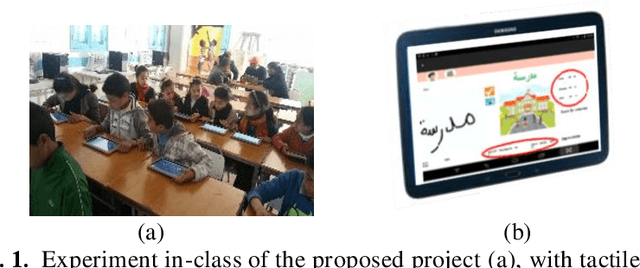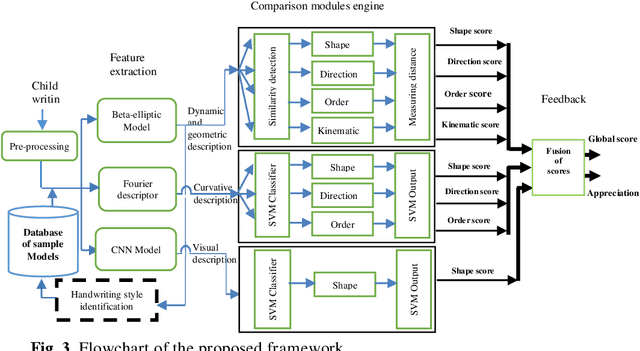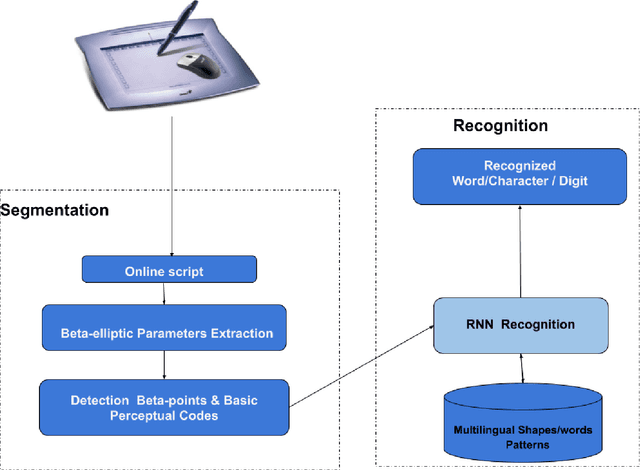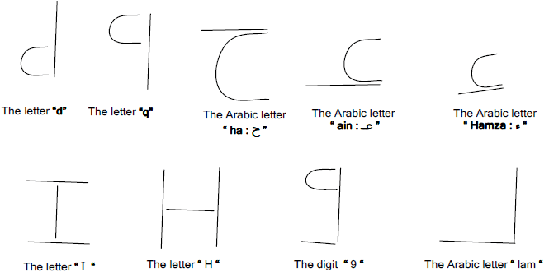Hanen Akouaydi
Handwriting Quality Analysis using Online-Offline Models
Oct 09, 2020



Abstract:This work is part of an innovative e-learning project allowing the development of an advanced digital educational tool that provides feedback during the process of learning handwriting for young school children (three to eight years old). In this paper, we describe a new method for children handwriting quality analysis. It automatically detects mistakes, gives real-time on-line feedback for children's writing, and helps teachers comprehend and evaluate children's writing skills. The proposed method adjudges five main criteria shape, direction, stroke order, position respect to the reference lines, and kinematics of the trace. It analyzes the handwriting quality and automatically gives feedback based on the combination of three extracted models: Beta-Elliptic Model (BEM) using similarity detection (SD) and dissimilarity distance (DD) measure, Fourier Descriptor Model (FDM), and perceptive Convolutional Neural Network (CNN) with Support Vector Machine (SVM) comparison engine. The originality of our work lies partly in the system architecture which apprehends complementary dynamic, geometric, and visual representation of the examined handwritten scripts and in the efficient selected features adapted to various handwriting styles and multiple script languages such as Arabic, Latin, digits, and symbol drawing. The application offers two interactive interfaces respectively dedicated to learners, educators, experts or teachers and allows them to adapt it easily to the specificity of their disciples. The evaluation of our framework is enhanced by a database collected in Tunisia primary school with 400 children. Experimental results show the efficiency and robustness of our suggested framework that helps teachers and children by offering positive feedback throughout the handwriting learning process using tactile digital devices.
Neural Architecture based on Fuzzy Perceptual Representation For Online Multilingual Handwriting Recognition
Aug 01, 2019



Abstract:Due to the omnipresence of mobile devices, online handwritten scripts have become the most important feeding input to smartphones and tablet devices. To increase online handwriting recognition performance, deeper neural networks have extensively been used. In this context, our paper handles the problem of online handwritten script recognition based on extraction features system and deep approach system for sequences classification. Many solutions have appeared in order to facilitate the recognition of handwriting. Accordingly, we used an existent method and combined with new classifiers in order to get a flexible system. Good results are achieved compared to online characters and words recognition system on Latin and Arabic scripts. The performance of our two proposed systems is assessed by using five databases. Indeed, the recognition rate exceeds 98%.
* 15 pages; 17 figures
 Add to Chrome
Add to Chrome Add to Firefox
Add to Firefox Add to Edge
Add to Edge